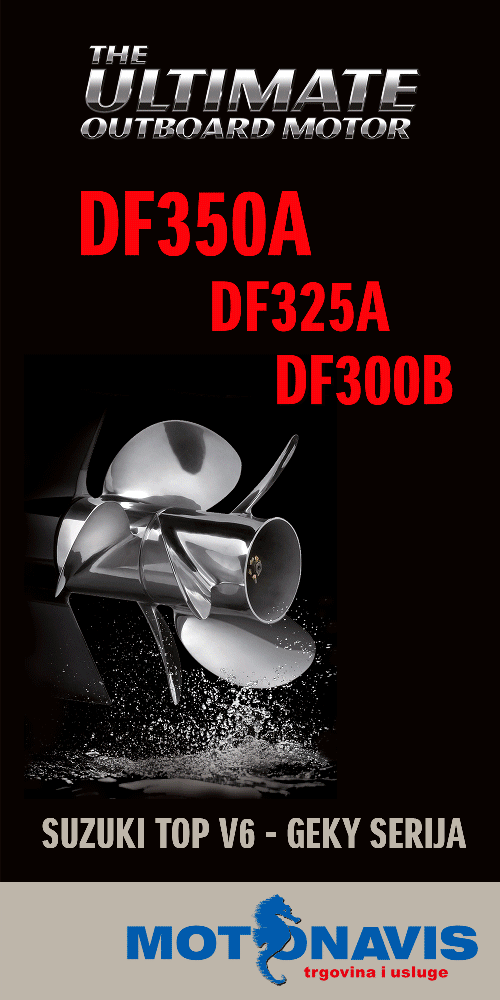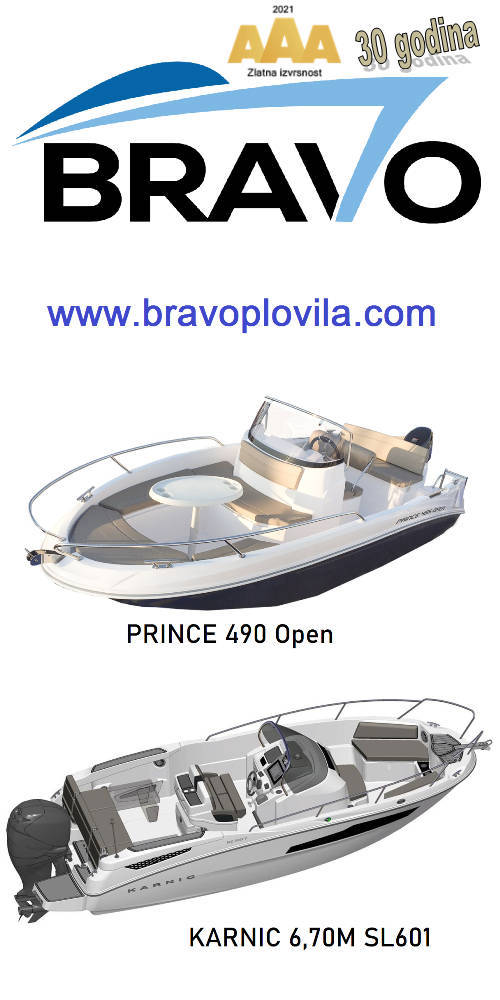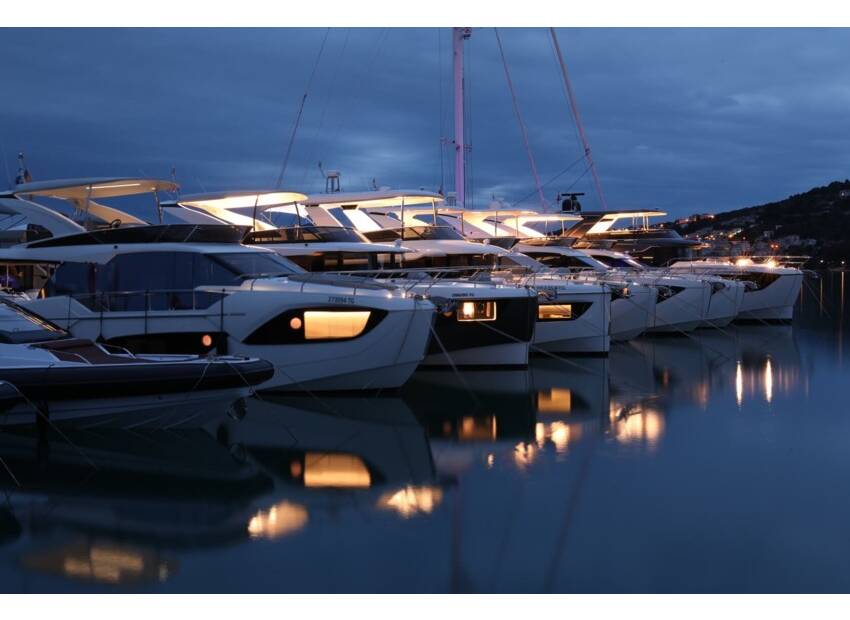The evolution in yacht design which we have seen over the past few years is being driven forward consistently by the major shipyards. The modern boats are easy to operate and offer enormous potential in terms of sailing performance due to large sail areas and high righting moments. At the same time, they do not neglect comfort.
Clean deck layouts are complemented by large lounge areas and extensive technical equipment in the cockpit area and below decks. Sophisticated lighting concepts make the living space appear bright and airy. The yachts are designed to make cruising under sails fast and comfortable, while the boat transforms into a perfect home once moored in the harbour. But there are also individual concepts that stand out from the mainstream.
Loans taken from racing yachts are unmistakably recognisable in the fresh range of cruising yachts: narrow bows continue wedge-shaped into wide midship sections and an almost equally wide stern area. The stem drops steeply, the stern is flat in most cases, thus creating a long waterline. The chines in the hulls are often just indicated. However, the chines in the stern areas of the hulls continue to provide a high degree of stability. Especially yachts with wide stern sections benefit when the additional hull volume dips into the water while heeling. This provides additional buoyancy and reduces the helmsman going up and down when positioned on the windward side of the boat.
These design features are present in yachts of all sizes. Even a traditionalist shipyard like Hallberg Rassy is following this trend and continues with its HR57 on a path already taken in the HR44 and HR340. Many other new yachts also rely on these characteristic hull features: Be it the 508 from Hanse Yachts, the Arcona 435, the Sunbeam 46.1, the Wauquiez Pilot Saloon 42, the Oceanis 46.1, the Grand Soleil 48 Performance or the Dufour 390 Grand Large. The list could easily be continued.
The X4⁶ and the Solaris 44 cannot hide their great performance potential, which they are also able to display in ORC racing. And the trailerable Coast 250 minimizes the wedge-shaped hull design to a length of less than eight meters. However, the 7.50-metre-long yacht from Swallow Yachts is much edgier and has a higher profile, which makes it a mini cruiser. The chines extend over its entire hull and thus provide a lot of space below deck.
A true personality is the new Mojito 10.88: corners and edges in the hull are the characteristic features of this French lady. The fresh 39er from the young Bente shipyard also sets distinct marks in its design as a multi-chined hull. The stretched, forward bow section of the Bente almost has the characteristics of a wave piercer.
A striking feature of modern yachts is a bowsprit firmly integrated into the hull. The designers in almost all shipyards have invested a lot of time into the design of this bow extension. The beak has thus become an aesthetic accessory and multifunctional tool. The bowsprit is not only the bending point for the gennaker or code zero, it is also holding the anchor. This makes work on board much easier. No more need for artistic manoeuvres to handle the anchor on the bow. Just drop the heavy piece of equipment from its specially designed holding at the push of a button. And it is just as easily retracted again.
Below the waterline, yacht designers position a heavy antagonist to their tall sail plans. Keel fins reach deep down with heavy keel bombs and provide a high righting moment, thus facilitating great sailing performance of the yachts. In many cases, however, keel configurations are optional in order to adapt the yacht to the owners preferred sailing destinations. Examples are the impressive keels of the Bente 39 and the Solaris 44. With a ship length of just 12 metres, the performance keel version of the Bente reaches down to 2.65 metres. The Solaris 44 relies on a ballast of 3600 kg at a depth of 2.60 metres for a 13.5-metre boat.
When it comes to rudder design, the wide stern of yacht designs takes its toll. In many cases the yachts are equipped with a twin rudder or, as in the case of the Hanse 508, require a very deep rudder in order to remain controllable in all conditions. The disadvantages of the twin rudder in terms of manoeuvrability are compensated by additional equipment such as a bow thrusters.

A lot of free spaces and high functionality even for small crews - these are the main criteria of modern yacht design when it comes to deck layout. There is hardly any reason left actually to work on the bow of modern yachts. All lines, stretchers and sheets are led into the cockpit underneath deck structures. In the cockpit they are easily accessible for a small crew or even the skipper on the helm. The fore sails are equipped with furling systems in order to facilitate quick and flexible reactions to any changes in the wind. If access to the bow is required at all, surfaces are kept straight and even without any stumbling hazards in the way. Most modern decks feature recessed flush hatches. Fittings, blocks and cleats are so cleverly installed or recessed that they are not in the way.
The silhouette of modern yachts is mostly very low and flat, cabin superstructures rise only just above deck and also offer plenty of space on the sides to walk around unobstructed. This design in some cases even turns the cabin roof into a sunbed - be it in the harbour or on a leisurely sailing trip at sea. The Mojito 10.88 and the Bente39 are strikingly different in this respect. While the French boat proves her edgy design with a comparatively high cabin structure, a classic deckhouse design was chosen for the Bente 39. Following the example of Imoca racers, the deckhouse is constructed as a shield in front of the cockpit crew, thus offering good protection even in heavy seas while keeping a 360° panoramic view through the all-round panorama glazing. In all cases, numerous windows and hatches allow plenty of light into the interior of the yachts.
The layout of lines and sheets and the instrument panels at the helm station help to separate the space on board into work stations and leisure areas. With few exceptions, the designers have decided to place the skipper aft, at the open stern of the yachts. A clear trend: a double helm, which is to a large part an effect of the wide sterns. It gives the helmsman positioned on the windward side a good overview of all guests and the entire ship. In addition, there is a comfortable passage way in the middle of the ship into the front cockpit area, which is characterised by wide lounge areas.
Hallberg Rassy, however, follows its own path. The Swedish shipyard has given its HR 57 a very protected centre cockpit in which the helmsman operates near the windscreen on a twin helm. A helm concept that Saffier also takes up on their daysailor Saffier SE37 Lounge. At anchor or in port, the cockpit becomes the perfect leisure zone. A Large lounge area, many seats, large tables as well as a wetbar and BBQ are now standard on many yachts.
Folding bathing platforms often also open a dinghy garage, as on the Grand Soleil 48 or HR57, to increase flexibility at anchor or in port. The French IDB Marine's team have even managed to equip the 11-metre Mojito 10.88 with a place for the dinghy in the stern. This is, obviously, at the expense of the interior space, but fits into the concept of the yacht from Brittany. The Mojito, with its pivoting keel and flexible draught, is designed for universal use.
Powerful rigs are ready to carry a lot of sail cloth. The sails can also be reefed quickly if necessary. Furling systems for the headsails - also for gennakers or code zero - are standard. In some cases, the designers have also given their yachts the option of additional staysails, such as on the Sunbeam 46.1 or the Bente 39. Fast operation is also the focus for the main sail systems. Lazy bags, furling systems in the masts or booms ensure that sails can be reefed quickly and stowed away neatly without much effort or taking up much space when in the harbour.
There are hardly any limits to individual layouts and design of the living space in the saloon and cabins. The shipyards offer different layouts to equip the yachts with comfortable owner cabins or additional berths for large crews. Hatches and windows let in a lot of light, but special materials used hardly allow a view into the interior of the yacht from the outside. The wide sterns also make it possible to install generous bathrooms and kitchen units below deck, which are hardly inferior to the comfort in your own home. In short: modern yachts offer sufficient space for individual enjoyment both above and below deck. This makes travelling for the whole family, with guests or a large crew an experience which meets everybody's expectations.
Related articles

Nautical Industry
Recognition for Moto-Nautics
Ranieri Int. honours his dealer for Slovenia, Croatia and Serbia





















